All about the volume of concrete mixers
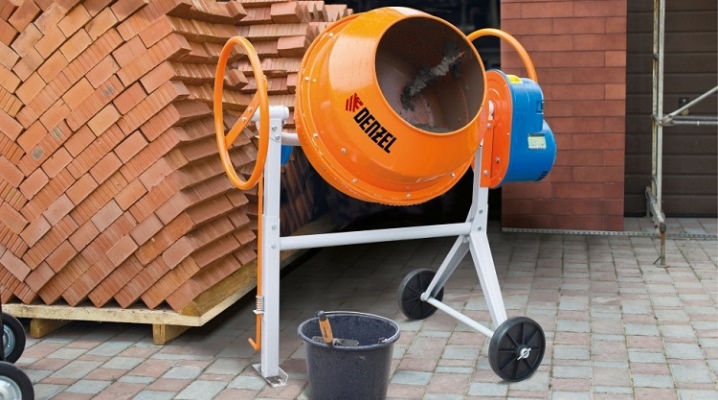
Concrete is one of the most commonly used materials. Not a single construction work can do without it. You can get it both in the form of a pre-prepared mixture, and by making it yourself. For a small amount of work, concrete is mixed manually in a trough using a construction mixer. If we are talking about a larger-scale construction, a concrete mixer is indispensable.
A quality concrete mixer is not a cheap pleasure. You should be careful when choosing such construction equipment before buying or renting, paying attention to all the characteristics. The main parameter is the volume.
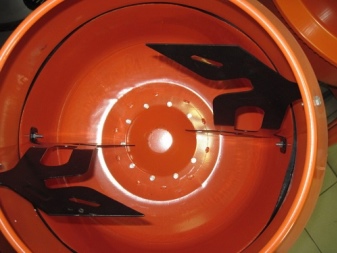

What are the volumes?
Today, there are a huge number of manufacturers on the concrete mixer market. All of them offer units with different technical characteristics, among which the volume, power, as well as the design features of the installation are important in domestic conditions. The volume of the concrete mixer is calculated depending on the scale of the planned construction work. If the concrete solution is needed in small quantities, you can get by with an ordinary construction mixer, although preparing the mixture with your own hands is not an easy job.
A stationary concrete mixer will make this task easier. She quickly and efficiently handles large volumes of raw materials. When performing one-time construction work, it is not necessary to buy an installation; it is more profitable to rent it. Sometimes it is advisable to order a ready-made solution, which will be brought in a concrete mixer or auto-mixer. This is a truck with a kneading drum and a transport belt.
The transported volume is measured in m3, as opposed to liters, or dm3 in concrete mixers.
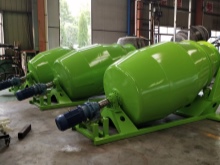


This amount of concrete is used, as a rule, for laying the foundation. When erecting small structures on the site (gazebos, garages), usually no more than 100 liters of concrete is required. For such volumes, a drum of 130-160 liters is enough. Concrete mixers from 63 to 500 liters are available for free sale. In large industries, there are specimens up to 1000 liters or 1 m3, but for construction on your own site, it is advisable to order such volumes in the form of ready-made mixtures supplied by automatic mixers.
Note! When working with a concrete mixer, the volume of the finished mixture always comes out less than the volume of the installation itself. This is due to the fact that the drum during operation is tilted to its own axis to facilitate the mixing process. Also, the quality of the raw material affects the yield of the finished material. The drum is usually loaded by 2/3, therefore, the output of the finished mixture is 65-75% of the volume of the concrete mixer. Such parameters are possessed only by installations of the gravitational type. Screw-type concrete mixers can be loaded to the full volume, since their mechanism does not provide for operation at an angle.

| Volume, l | Characteristic |
| 60 |
Suitable for people working alone on site. The designs are mobile, but they have many disadvantages:
|
| 120 |
Typical household volume for private construction, when the work is carried out by one person. The best performance / cost ratio. |
| 160 |
Maintains an average pace of work on a construction site and is optimal for two-person work. |
| 180 | A good choice for a whole team. You should pay attention to such a volume with a larger-scale private construction. |
| 200 | Supports high rates of construction. Especially suitable for the construction of small one-story houses when a large team is working. |
| 250 | It is used less often in private construction. Suitable for the construction of two- / three-story buildings. Among the disadvantages are long-term mixing of raw materials, as well as the need to dispose of residues. |
|
300 and more |
It is used in larger-scale construction works, for example, in the construction of multi-storey buildings and warehouses. Although for such needs it is more rational to use automatic mixers. |
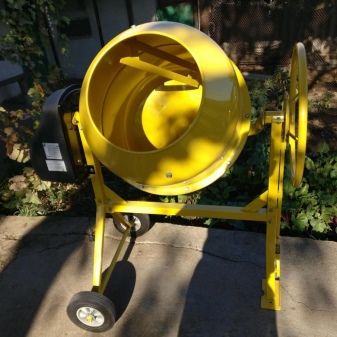
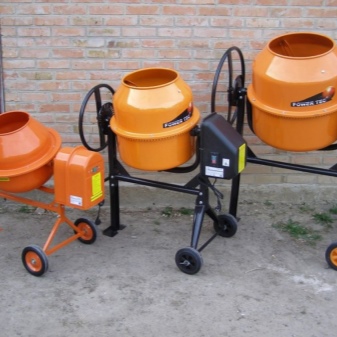
How to determine?
The volume of a concrete mixer is often indicated on the drum itself. It can also be found in the instructions or other installation documents under the heading "Specifications". You can find out how many cubes of concrete come out in one cycle of work as follows.
Approximate calculation method
This method is suitable for gravity type concrete mixers. Knowing that the drum of a concrete mixer is loaded by 65-75%, you can roughly estimate the amount of concrete obtained. So, for example, a concrete mixer with a volume of 120 liters will produce about 75-90 liters of the mixture.

Weighing method
This method is used to measure the mass of the prepared concrete mixture in concrete mixers. For this, a machine loaded with raw materials is weighed on an industrial scale. Then, the technical mass of the vehicle indicated in the passport is subtracted from the received actual mass. This is the most accurate way.
On a note! 1 cube of concrete weighs about 2.4 tons.
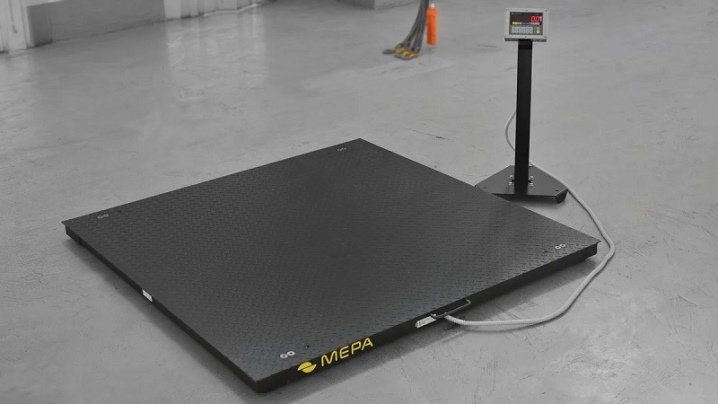
Time method
So you can calculate the volume of the mixture during the time after which it is completely unloaded from the mixer. Under standard conditions, 1 cubic meter of concrete comes out in 10 minutes, respectively, it will take 30 minutes to unload 3 cubic meters. This is the least accurate method. Determining the amount of concrete that needs to be ordered for construction can be done using simple mathematics. To do this, it is necessary to multiply the dimensions of the poured area (length, width and height). If the object is a complex polyhedron, you should split it into separate simple shapes and add their volumes together.
Usually, such calculations do not make much sense, since during operation there are always errors up or down. In addition, in order for the concrete to be sufficient for sure, it is recommended to prepare the volume of the mixture several liters more than necessary. It is worth deciding in advance where to dispose of the leftovers with benefit.
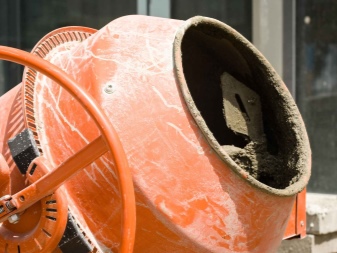

Which concrete mixer to choose?
Before evaluating the technical characteristics of hotel installations, it is necessary to select the type of concrete mixer. They are gravitational with manual and electric drives, as well as forced or screw. In the first case, concrete is kneaded in a rotating drum under the action of gravity, in the second - with the help of rotating blades in a stationary drum. In private construction, the first type is used more often.
To choose the best concrete mixer for your home, you should be guided by the following criteria.
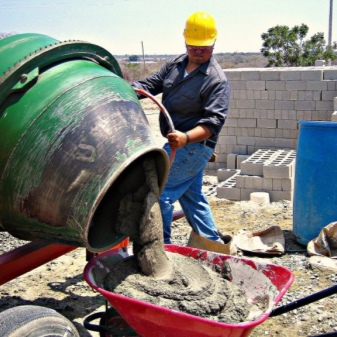
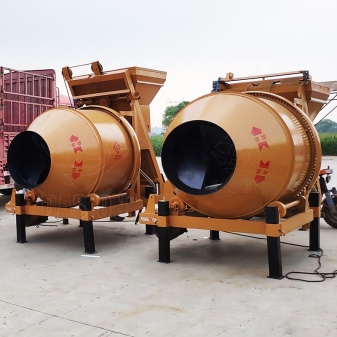
Drum volume
The most important parameter, since the speed and pace of construction work depends on the amount of concrete produced. For personal use, a concrete mixer with a volume of 120-160 liters is sufficient.
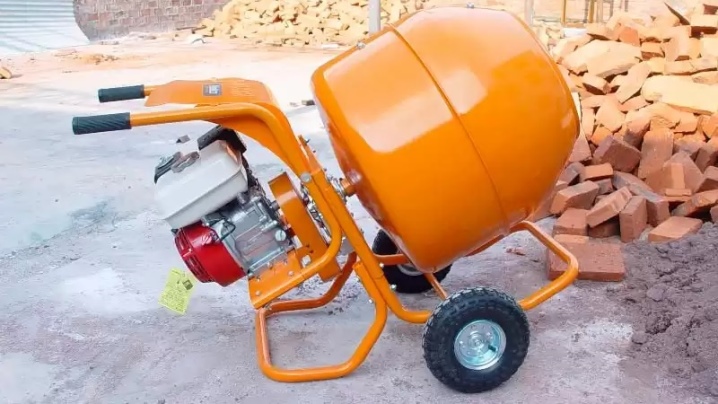
Engine power
The power of the installation determines the time of its uninterrupted operation. An engine with more power runs longer and is also less prone to overheating. For small jobs, a motor with a power of up to 700 watts is suitable. For more impressive construction (construction of a garage, baths), it is recommended to use a device with a power of at least 800 watts.
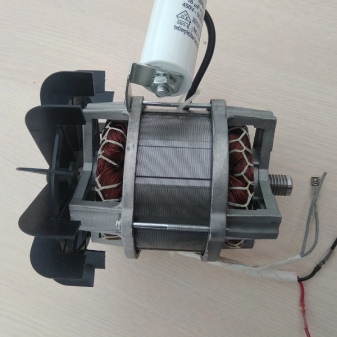
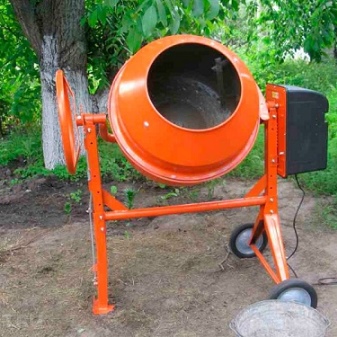
Mains voltage
An important parameter that determines the operation of the engine. Please note that the ubiquitous mains voltage is 220 V (single phase).Some concrete mixers are designed to be connected to 380 V (three-phase network), so they will not work from single-phase current.

Revolutions per minute
An engine parameter that affects the number of drum revolutions per minute. For personal use, it is recommended to choose a motor with a torque of 25-28 rpm.
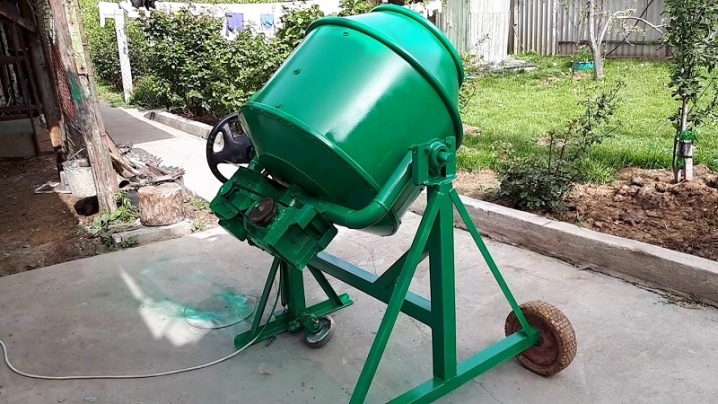
Design features
A high-quality concrete mixer must have certain design parameters, including the thickness of the drum walls and the material of the ring gear. The durability of the drum depends on the first parameter. The wall thickness must be fully matched to the motor power and the dimensions of the unit. Gears are available in a variety of materials. The most reliable are cast iron and polyamide. They are of the same quality, they do not break down often. Concrete mixers with a steel or regular plastic crown are not a good choice.
Among other structural elements, it is worth paying attention to the wheels. Their presence will facilitate the transportation of a stationary installation, especially for those who are engaged in construction on their own.
In order for the purchased concrete mixer to serve for many years, it is necessary to observe the precautions and rules for using the installation specified in the instructions.
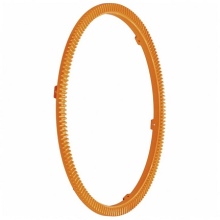


In the process of work, you should:
- prepare a flat area before using the concrete mixer;
- load raw materials into the drum when switched on;
- load the device of the gravity type by no more than 75%;
- correctly calculate the proportions before serving;
- first pour water, then cement and other fillers (sand, crushed stone);
- remember the exact time of mixing the raw materials;
- clean the inner surface of the drum after removing one batch of concrete;
- use the prepared mixture within 30 minutes;
- upon completion of work, wash the drum and crown without flooding the engine with water.
Be sure to read the reviews and technical characteristics of the device before buying, compare them with the type and scale of construction work. Compliance with these requirements guarantees a long and trouble-free operation of the purchased concrete mixer.


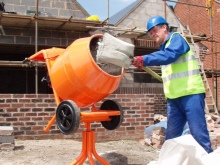













The comment was sent successfully.